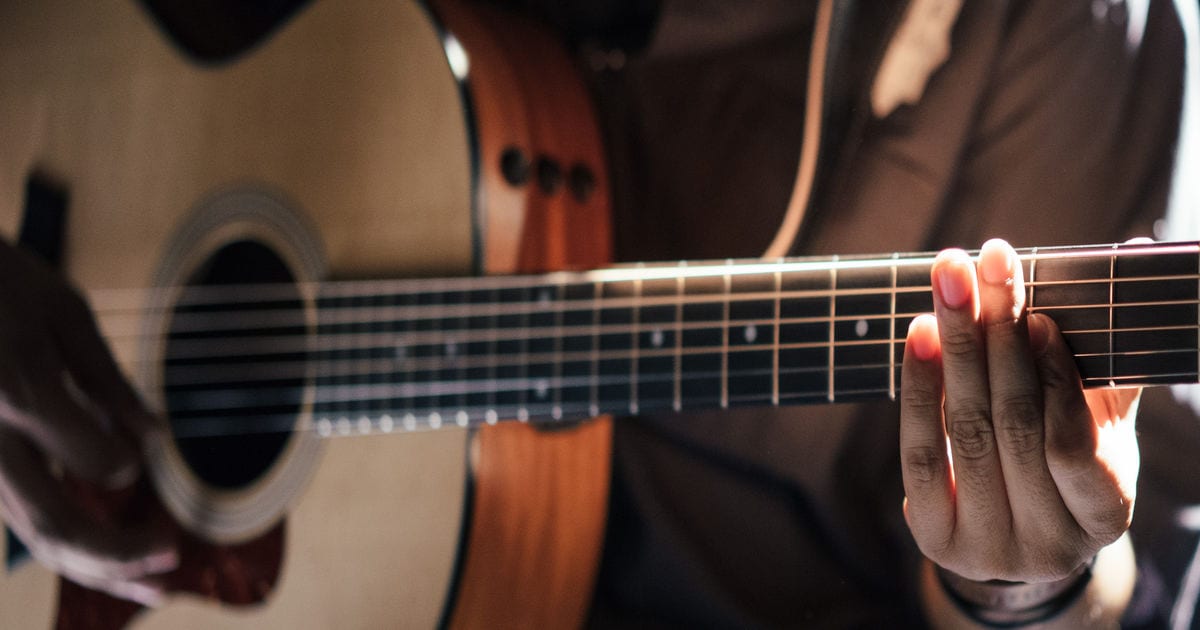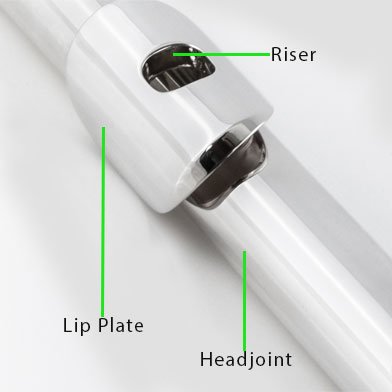On this page you will find:
- Choosing your first flute - Some things to bear in mind...
- How we choose - How do we decide which flutes to stock?
- Hire or Buy? - Our instrument hire scheme
- Flute Brands - Which brand is best?
- Flute language explained - Find out what all those technical terms mean
Other relevant pages:
- More details - How it works
- Woodwind instrument care & maintenance
- Hire Now in our online store
- Contact us
Choosing Your Flute
If you already play a musical instrument, then you will have an idea of what you are looking for, but if you have no previous experience, choosing a musical instrument can seem like a minefield. There are so many makes and models on offer, and such a range of prices that you may need some guidance.
If you already have a teacher, it is well worth asking their advice.
It isn't much fun to arrive for your first lesson to find that the teacher doesn't like the instrument you have hired!
We believe that the instruments we hire provide the best combination of quality and value for money available. In this article we will look at the three best student flute brands around.
Flute Brands
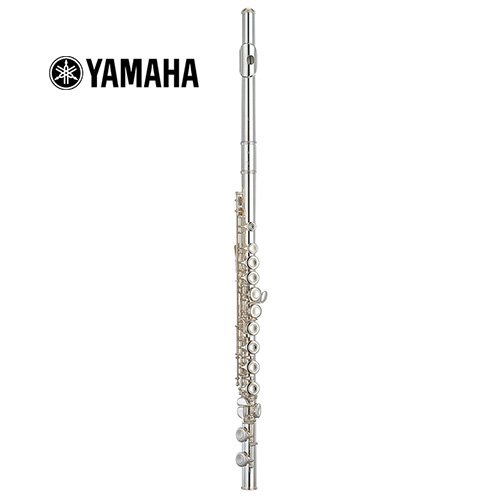
Yamaha Flute YFL211 & 212
Level – Beginner to intermediate
Age – Adult & Child
Grades – 1 – 5
Yamaha have some serious heritage and respect within the music industry, and as with most Yamaha products there is more human involvement that you would think. As a brand they are up there with the best, both at student and intermediate level.
The YFL211/212 headjoint is specifically designed for a beginner player, and it makes the lower notes easier. (The Yamaha 212 model is the updated version of the Yamaha 211 model)
Summary
Easily the most accepted, industry standard flute for learning on. It makes playing that bit easier especially on the lower notes where students can struggle.
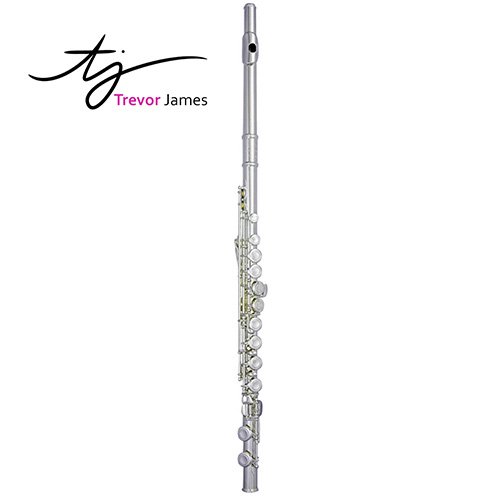
Trevor James Flute 10X
Level – Beginner to intermediate
Age – Adult & Child
Grades – 1 – 4
Trevor James make up a huge part of the flute market and have always been popular with teachers. As a company they make all woodwind instruments and a large amount of brass too. They have had years of experience doing so.
The Trevor James 10X makes both the higher and lower registers easier for the student just starting out and it has a bright tone. The Trevor James 5X is designed specifically for a beginner player on a budget.
Summary
A popular flute with some heritage but doesn’t quite have the reputation as Yamaha does among all teachers.
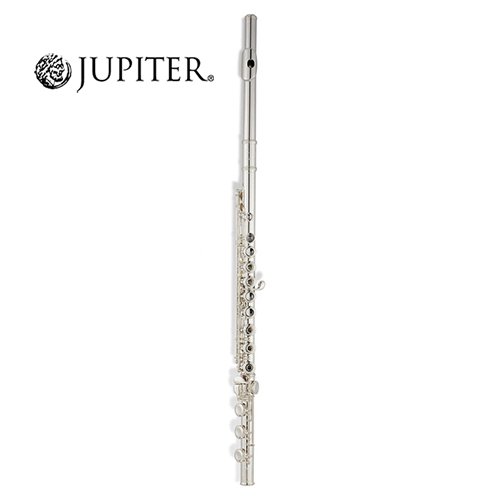
Jupiter Flute
Level – Beginner
Age – Adult & Child
Grades – 1 - 3
Solid construction and easy to play, Jupiter is easily the best flute within the price range. The company that produces Jupiter are called Kung Hsue She (KHS) which means a company helping schools and culture, which is exactly what they do.
Build quality is good, they are easy to play from the off and get anyone started properly but it will not take you as far as other flutes.
Summary
One of the most popular beginner instruments we have seen. Slightly restrictive once the early stages have been accomplished.
Which Flute Should You Hire?
As you look through the range of hire flutes, we would generally say that by paying more for the hire of your first instrument, you would expect:
- Better build quality
- Better tone quality
- Easier to achieve a better tone
There are still many expensive instruments available which don’t perform as well as you might expect. We have confidence in the brands we hire, and consider them safe choices that offer the best value for money.
How we choose an instrument
We get shown new models and brands all the time. Our stock has been chosen using three main sources of information.
Firstly, our repairers. Regardless of what anybody else thinks of an instrument, if it doesn't meet the approval of our repairers then we don't stock it, full stop. We need to be able to look you in the eye for years to come, so if our repairers are going to criticise it when it needs attention, we can't hire it!
Secondly, our customers. We have listened to many flute teachers and players over the years. We know what they like and why. Their input mainly concerns practical issues relating to playing, such as tone quality, tuning, feel and positioning of key work.
Finally, we use our own commercial expertise. We address issues such as; is it good value for money? How long it will last? Will it be the right instrument for someone learning to play? Our job is to ensure that we have given you all the information necessary to help you choose the instrument that will best suit your needs.
Hire or buy?
Many parents of children learning for the first time, and some adults who have never played before are understandably unsure of buying until they are more confident that they will cope with learning the instrument, and indeed enjoy the experience. Our Hire Scheme can provide the ideal introduction to the instrument for a comparatively small outlay. The main advantages of our scheme are:
- It's economical. You pay monthly, and you can cancel at any point after the first 3 months - simply return the instrument to us.
- Our hire instruments are all top quality. Many players are put off by the experience of playing on a poor quality instrument.
- It's convenient. You don't have to worry about buying and reselling it if it doesn't work out. You simply return the instrument to us.
Flute terminology explained
Confused by terms such as 'E-Mech' and 'Offset G'? Here is an explanation of the most common technical flute-speak...
Assay Laws & Materials Descriptions
In the United Kingdom there are 'Assay Laws', set down by the government in the last few hundred years, which restrict the use of the terms 'Silver', 'Gold' and 'Platinum' to items which have passed the quality tests at the London Assay Office and subsequently received a 'Hallmark'. As there is only one foreign company (Muramatsu) that has put its instruments through this procedure we are unable to use the terms above to describe materials used in flute manufacture without doing so illegally.
In our descriptions of our flutes and head joints we use the terms 'Solid', 'Red', 'Yellow', 'White' to give an indication of the kind of base material used. We are permitted to use the terms 'silver plated', 'gold plated' and 'platinum plated' as these are not restricted by the above laws.
B Footjoint
This is simply a longer foot joint with an extra key and touch piece which allows the player to play B below middle C.
C# Trill Key
An extra tone hole is positioned to the left of the thumb key. The covering key is, like the G#, Eb and trills, normally closed and is opened by a lever usually positioned next to the 'Bb lever'. This key allows an easy B/C# trill and Bb/C# trill in the first two octaves (instead of using the index finger and thumb). It also has the advantage that, on a flute with E mechanism, it can be used in conjunction with the first trill key to give an easy G/A trill in the third octave. (see also G/A trill key) The C# trill mechanism is more commonly found than the G/A trill mechanism.
Closed Holes and Open Holes
There are two forms of key work available for flutes. Open holed keys and closed hole keys. The closed hole keys are used on most student flutes, open holes are generally used by the more accomplished player. Open holed flutes have a hole in the centre of the five keys directly operated by the fingers, not through touch pieces i.e. left hand middle and ring fingers and right hand index, middle and ring fingers. There is no difference in sound but there are several technical advantages to open holes, namely alternative fingerings and better quarter- tones and multi-phonics. Some teachers use open holed flutes to encourage correct hand position.
Conical and Cylindrical Bore
There are two common designs of piccolo. Those with a cylindrical tubing for their body and those with a conical tube. The conical tube gets narrower towards the lower end and greatly improves the intonation on the piccolo. Most professionals play on a wooden instrument which are always conical.
Student instruments are usually made from metal or resin, sometimes wood. The resin and wood piccolos have conical bodies but until recently technology was not available to produce a cheap, conical, metal body and so most metal piccolos have a cylindrical tube with the associated disadvantages in tuning. A method has now been developed to use pressurised water to form the body and drawn tone holes simultaneously and so student piccolos can now be made with a conical body.
Curved Head
A curved head joint is necessary when the length of the flute causes problems, usually in Bass and Alto flutes or flutes for very small beginners. The head curves back on itself (like an umbrella handle) effectively bringing the keys closer to the player.
Drawn Tone Holes vs Soldered Tone Holes
There are two forms of tone hole manufacture, namely 'Drawn' and 'Soldered' tone holes. The former is found on all student instruments, mid range instruments and some hand made instruments (e.g. Jack Moore). The latter is used almost exclusively in hand made flutes.
'Drawn' holes are created by a tool which pulls the main body tubing up in a cylinder at right angles. This is then trimmed and then the 'sharp edge' is rolled back on itself to create the top of the tone hole, upon which the key pad will create the air seal for that note.
Soldered tone holes are actually produced from a separate tube of material. The maker cuts the tube into rings and then shapes one side to fit the curve of the body tubing and makes the other side flat. The flute maker then cuts holes in the main body tube and solders this 'ring' to the tube.
The accepted advantages of soldered over drawn holes are that the soldered tone holes don't cause thinning of the body tubing, are flatter on top and, therefore, make a better seal for padding. In practice it is difficult to say whether these advantages really have enough effect to base a purchasing decision on them.
E Mechanism
Also known as 'Split E'. This is an automatic mechanism (i.e. the player doesn't need to alter fingerings) that holds down the lower G key when fingering third octave E. It improves the venting for this note and, therefore, makes it easier for most players. It is usually recommended as standard on beginner flutes but for the more advanced player it is worth noting that a G to A trill in the third octave becomes awkward. It is also worth noting that an E mechanism can cause problems on an 'In-Line' open holed flute unless it has a 'pinless' mechanism. On normal offset G flutes (both closed and open hole) there is no mechanical problem associated with E mechanism.
G/A Trill Key
Two extra small tone holes are positioned on the body. One is to the left of the G# key the other is to the left of the thumb key. The touch piece is usually next to the first trill key and when both trill keys are used together an easy G/A trill is achieved. It is usually found on a flute with E mechanism as the addition of E mechanism makes a third octave G/A trill difficult (see also C# trill key). The G/A trill is less often found than the C# trill mechanism.
'Gizmo'
Also called a 'High C facilitator' . On a B footjoint it is usually necessary to close the low B key when playing top C. A 'Gizmo' is a small key extension which makes this much easier.
High G# Mechanism
This mechanism is found mostly on piccolos but can be found on a hand made flute. Simply put, it is a mechanism which half closes the thumb key when playing third octave G# fingering. This aids the venting for this note and should, in theory, make the note easier. The adjustment of the mechanism is important as the degree of venting can profoundly affect the top C.
'In-line'
Often called 'French style' as this is the most commonly played specification in France. This type of specification is when all the main action key work on the body, especially the G keys, is attached to one rod and hence all the keys are in a straight line. It has been traditional for most professional players to use this specification since the last century. The mechanism has one inherent fault in a tendency for the B flat key to bind when fingering between third octave F and F#. This is particularly the case where the player has a 'heavy touch' and actually distorts the rods slightly as he/she plays. This can be eliminated where a 'pinless' mechanism is used.
'Offset'
This is the most common specification for closed hole flutes. The G keys are built on their own rod, separate from the rest of the main action key work, hence making them slightly out of line with the rest of the keys. Open hole flutes can also be made 'offset'. The main advantages to offset G keys are that the ring finger on the left hand is, generally, in a more comfortable position and that an E mechanism can be fitted reliably without the binding problems inherent in 'in-line' mechanism. Open holes with offset G keys has become much more popular in recent years.
Open G# Mechanism
This is a fingering system which works in the opposite way to the more common closed G# system. When the player plays 'G' fingering, this instrument will actually sound G#. To play 'G' the left hand small finger needs to be put down. It is a more logical system in that to 'go down' the chromatic scale the player adds another finger. In fact is was Theobold Boehm's original system, along with reversed thumb keys, and is played in eastern block countries to this day. Many western players have adopted the Open G# system without reversing the thumbs.
Pinless Mechanism
This refers to the fact that the main mechanism of the flute is built without pins holding the barrels and rods together in certain places. 'Bridges' are use instead to bypass the need for pins. Advantages are that it is easier for servicing and less prone to rusting. When used in an 'In-Line' mechanism it eliminates the tendency for the B flat key to bind.
Reform Lip Plate
Also sometimes called a 'Winged' Lip Plate. This is a style of embouchure on a head joint where the lip plate is formed with a raised 'ridge' on either side of the embouchure hole, approximately where the lower lip of the player would rest. There are many variations but the apparent advantage seems to be a general improving of 'ease of blowing'. As with all designs, however, this may mean a reduction in another facet of the response of the head joint.
Reversed Thumb Keys
This specification is found almost exclusively in former eastern block countries. As it says, the keys are reversed such that what is normally Bb is now B and vice-versa. As with the open G# system it is more logical as the player's fingers move down the tube for a lower note.
Riser
Also called the 'chimney'. This is the piece of cast metal which forms the embouchure hole and joins the lip plate to the head joint tube. Although small, it plays an important part in generating the sound of the flute. Solid silver or solid gold risers are now quite commonplace, even in good quality student instruments.
Roller keys
These are most often found on the foot joint keys. They are small rolling 'bars' built in to the keys that allow the player to slide their little finger quickly between two neighbouring keys. A D# roller is most common but a C# roller can be seen too. The C key on most flutes is a roller key anyway.
Seamed Tubing
There are two ways in which the tubing for a flute can be produced, namely 'drawing' the tube or 'seaming' a tube. 'Drawing' a tube, the most often used method in modern times, is done by taking a flat disk of metal and 'drawing' or 'pulling' the material in to a tube shape using pressure. A 'seamed' tube is produced by taking a flat piece of metal, wrapping it into a cylinder shape and then soldering the two edges together along the 'seam'.
In the 19th century the technology for making 'drawn' tubing was not advanced enough to produce metal for flutes and so the 'seaming' method was used. Many modern flute players feel that a seamed tube produces a different sound and so the technique is still employed today by some makers, although they are in the minority.
One of the possible problems with a seamed tube is that the seam can 'come undone' if the tube is damaged or expanded, such as in fitting a head joint, so if you are interested in a flute or head made with this technique please bear this in mind.
Straubinger Pads
Traditionally all flutes have been fitted with pads made from felt. When properly set up, good quality felt pads do their job very well, preventing leaks while requiring the player to press only lightly on the keys.
However, the physical properties of felt vary quite dramatically with changes in temperature and humidity (one of the main reasons for always cleaning out the excess moisture from your flute before putting it back in the case). Hence, over time the expansion, contraction, moistening and drying out that results from changes in atmospheric conditions causes the pads to go out of adjustment, meaning regular maintenance is required to keep the instrument playing to its full potential.
Straubinger pads are made from a special synthetic material, with a similar 'feel' to felt, but whose properties are much more stable. Also, each pad is held in place under tension by a unique support mechanism. The result is that the pads remain in place and properly adjusted, and the instrument requires much less maintenance to keep it in top condition.



